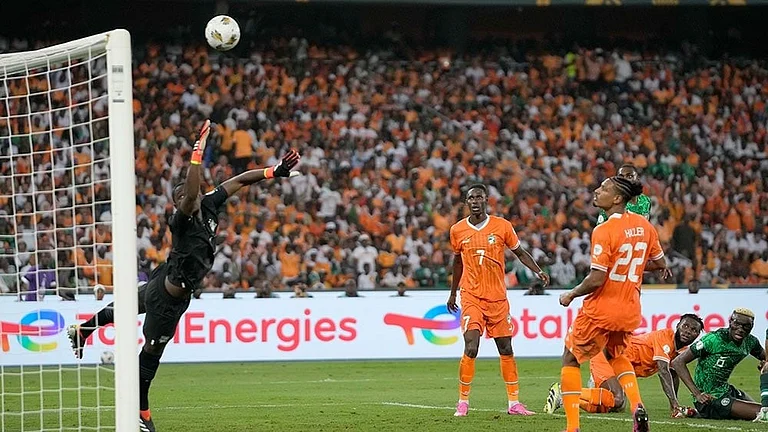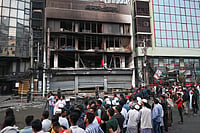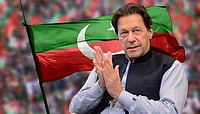Wishful thinking? That just about sums up industry's general reaction to Commerce Minister P. Chidambaram's grand strategy to raise India' sexport earnings from $26.2 billion in 1994-95 to between $75 billion and $100 billion by the year 2000. "The $100 billion target is unrealistic and over-ambitious, given the current state of India's infrastructure," says Satish Girotra, managing director of Ganapati Exports Ltd, the country's largest private sector exporting house. Agrees J.C. Srivastava, FICCI'S foreign trade secretary:"The $100 billion export mark is a tall order."
Chidambaram unveiled his ministry's export plan at a star-studded function in the capital on December 27. But beneath the veneer of applause, there was an air of cynicism in the audience, which included a galaxy of ambassadors from several countries, captains of Indian industry, top executives of leading export houses, presidents of apex commerce and industry chambers as well as government officials.
The minister envisages raising India's share of exports from the present 0.6 per cent of world trade to at least one per cent by the turn of the century. The strategy: to sharp-focus on the 15 commodities which accounted for 80 per cent of last year's exports, and the 15 countries which absorbed over 60 per cent of total shipments. But the plan appears too facile and skeletal, lacking the necessary meat and clothing to give it real life and blood. For instance, what about products like computer software and hardware, and granite, categories in which India has definite competitive advantages? And what about the fact that of the 15 high-focus countries, eight are developed markets, and extremely difficult to penetrate. "We all knew about the 15 countries and 10 emerging markets that India could tap," says Dr R.K. Dhawan, director general of the Federation of Indian Export Organisations (FIEO), which has a membership of one lakh exporters and contributes 72 per cent to the country's exports.
The six pieces of strategic advice that Chidambaram offered exporters: countries should export what they can; India should concentrate on markets with per capita income above $20,000 a year; if one product can be sold in a market, so can others;if a product can be sold in a market, it can be sold in neighbouring markets; if the market resists a product it could be due to non-tariff barriers and exporters must put their money where their markets are. Simplistic by any standards.
"The Commerce Ministry's strategy is not concrete enough," observes Dhawan. The minister's 90-minute presentation left many questions unanswered, he adds. "The minister failed to say what the existing position and size is in the 15 markets, the real import figures now, what is the scope in future there, what are the possibilities for Indian exporters and how do exporters go about boosting trade."
Says Srivastava: "Industry would like to know what exactly the Government wants to do, the kind of support the Government is going to give to exporters, what policy initiatives it will take, would there be fiscal benefits, and so on."
And anyway, to exporters, it may all be old wine in new bottles. About a year ago, ASSOCHAM had suggested an export strategy concentrating on seven sectors that would push up exports to $90 billion by the year 2000, provided the Government develops the infrastructure and takes certain policy decisions to facilitate international trade. And three weeks before Chidambaram's grand plan was unveiled, FIEO had released a strategy paper on how India's exports could rise from a projected $31 billion in 1995-96 to $100 billion by 2001.FIEO identified seven sectors—hi-tech goods and consumer electronics, computer hardware and software, agro-based and marine products, garments, gems and jewellery, engineering goods, drugs and pharmaceuticals—in which India can attain substantial growth in exports.
Unlike the Commerce Minister's rather sketchy presentation, FIEO's strategy paper,which runs to 57 pages, has a broader canvas and encompasses wider issues which ought to be addressed to achieve export growth. The FIEO strategy suggests tuning up the Exim Policy and extending administrative and fiscal support to exporters, developing various export segments, expanding and upgrading the infrastructure, extending India's presence in traditional markets, penetrating new markets, enlarging the export base, and above all, establishing India as a supplier of quality goods and services to the world.
How does the Government propose to tackle the serious trade-related systemic problems, ask exporters. For Chidambaram's assertion during the presentation that rectifying the "three I's"—lack of infrastructure, inflation and high interest rates—will be "highest on the agenda of the next government" sounds dangerously like standard lip service.
ASSOCHAM Secretary General V. Raghuraman feels that without proper infrastructure, India's exports could be stuck at $70 billion by the turn of the century. Dhawan points out that road conditions are "horrible", loading at ports is painfully slow and the facilities at airports woefully inadequate. Indian airports do not have jumbo X-ray machines. So primitive is the system that every package has to be opened physically even though there is a cooling-off period for goods to be exported by air. There are no airconditioned warehouses near the airports to preserve perishable exports like flowers. It takes as much as one month for trucks to reach the Bangladesh border, the route for 15 per cent of total Indian exports, according to Dhawan.
The average Indian port performs at one-third of the efficiency levels of ports in other Asian countries like Singapore and Hong Kong. An FIEO study shows that the country loses around $420 million a year on account of container delays, ship waiting and poor feeder technology. The country's international trading is growing at a steady pace of 18 per cent since the past two years (exports grew by 24.4 per cent between April and November 1995), but cargo handling capacity has inched up at a dismal rate of 7 to 8 per cent.
According to Girotra there have been instances when exports of commodities such as rice and wheat have been held up at the ports for one to two months because of congestion at the ports, resulting in loss of orders. Srivastava sums it up by saying that "price-wise the competitiveness of Indian exports is not bad, but what the country lacks is assured timely and speedy delivery of products"
Add to that the power situation. Erratic power supply and shutdowns, and the exorbitant cost of power affects the competitiveness of Indian exports. The prevalent power rates in China, Thailand and Indonesia are about US $4 to $4.5 per kilo watt per hour, whereas Indian companies in most states pay between $8 and $9 per kilowatt per hour.
While exporters should not expect subsidies, the least the government can do is ensure efficiency in sectors such as power and transport, says Srivastava. Loading and unloading at ports should be declared an essential service and barriers to trade such as road tax/octroi should be broken down to ensure free movement of goods for export destinations, he suggests.
What adds to the exporters' cup of woes is the lack of coordination between the Commerce and Finance Ministries with regard to vital issues like duty concessions. When the Commerce Ministry, for instance, issues regulations, they are not backed by notifications from the revenue department of the Finance Ministry, Dhawan points out. Says he: "A significant part of duty exemptions announced by the Commerce Minister in his Exim policy of April 1995 have remained unimplemented because they have not been backed by notifications from the Customs Department." Dhawan is sceptical about about the need for parallel notifications from different ministries. "When one ministry announces a notification, shouldn't the other ministry honour it?" he asks.
Girotra suggests that when the annual Exim policy is announced, matching concessions should be declared simultaneously by the Finance Ministry. The Commerce Ministry's role is promotional, while that of the Revenue Department regulatory. "If the government wants to boost exports, the two ministries—Commerce and Finance—need to work more closely and with greater coordination," he points out.
Also, instead of merely holding meetings with apex chambers of commerce and industry, which most often turn out to be "ritualistic" affairs, the Commerce Minister should have one-to-one meetings with exporters themselves, says Girotra. "There are lots of problems with the Customs authorities at airports and ports and officers there don't seem to trust trade," he feels. "The best way to build confidence between exporters and the Government is to sort out issues face-to-face, rather than discuss them at big meetings."
Today India's exports constitute 6 to 7 per cent of the GNP compared to 21 per cent in China, between 60 and 70 per cent in Malaysia and more than 100 per cent of GNP (more than 100 per cent due to re-exports) in Singapore and Hong Kong. Srivastava attributes this to Government and industry apathy towards exports. Adds Raghuraman: "India has limited experience in exports and we are only positioning ourselves now in the international trade arena."
Their sentiments echo clearly that India has a long, uphill climb ahead to be really reckoned as a major exporter. And sunny optimism and superficial prescriptions alone cannot help it reach the top.


























